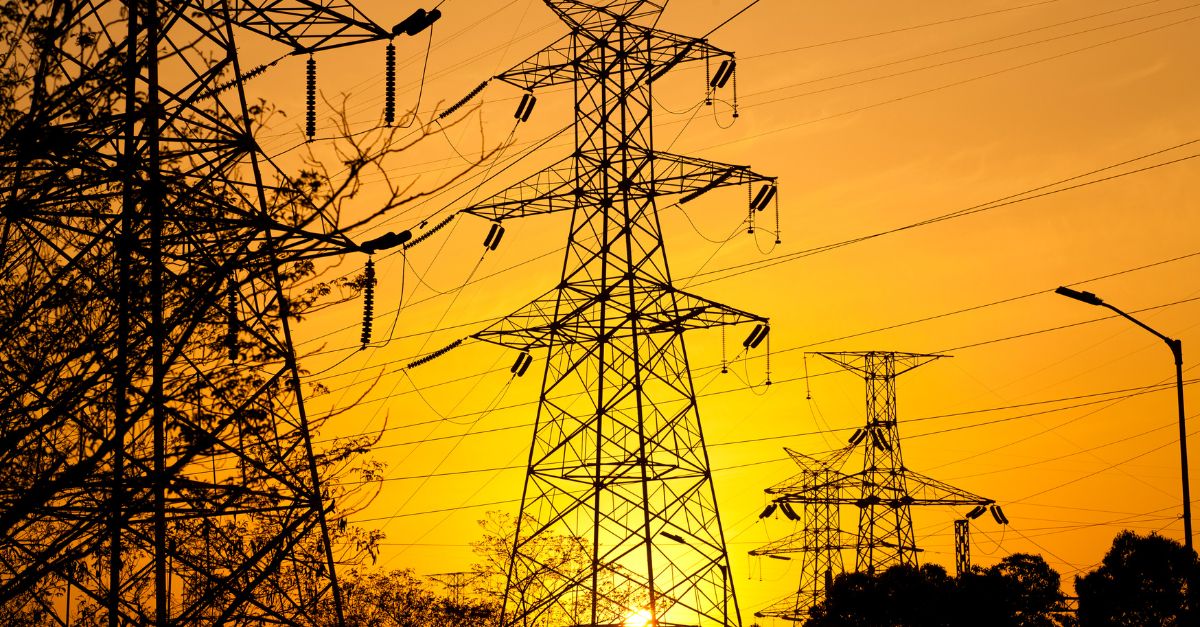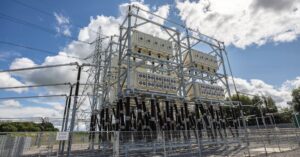
War of the Currents
July 8, 2025
In the late 1800s, the “War of the Currents” pitted two titans of industry against each other: Thomas Edison, championing direct current (DC), and Nikola Tesla and George Westinghouse backing alternating current (AC). DC offered precise control, electricity flowed like water through a pipe, reliably from point A to point B. AC, meanwhile, oscillated back and forth, allowing efficient long-distance transmission but at the cost of losing some control over where and how power flowed.
More than a century later, AC won the war, but we’re still wrestling with its limitations.

One of the most persistent challenges in AC power systems is the inability to directly control how electricity moves through the grid. When multiple parallel paths exist between two points (as is common in transmission networks) power divides among them, not based on human instructions but on the “electrical ease” of each path. It’s like trying to direct traffic without signs, lights, or barriers, cars (or electrons) will simply go wherever the road feels smoothest.
Why We Can’t Tell AC Where to Go
In a DC system, engineers can manage power flow by adjusting voltage at either end of a line, lowering it here, raising it there, to influence how much current moves and in what direction. It’s relatively straightforward, and this precision is one reason high-voltage DC (HVDC) links are used to interconnect distant parts of modern grids.
AC systems, however, are different beasts. Electricity in an AC network chooses its path based on the electrical “length” of the lines, not their physical distance, but how much effort it takes to push current through them. That effort depends on invisible properties of the line, and these properties are typically fixed by the line’s construction. The result? Grid operators have little control over which line carries how much power.
This becomes a serious issue when one path gets overloaded while another remains underused, not because it’s farther away, but simply because electrons prefer the easier route.
The Steering Wheel AC Never Had
Enter SmartValve, a modular technology developed by Smart Wires, based on what’s called a Modular Static Synchronous Series Compensator (M-SSSC). It offers something revolutionary: a way to actively influence the flow of power on AC lines.
Rather than rerouting the wires themselves, SmartValve changes the effective difficulty of the path, almost like adjusting the terrain under a road. Imagine two highways connecting the same cities. One is flat and smooth; the other has steep hills. Drivers will naturally prefer the easier route. But what if you could raise or lower the hills at will? You’d have a way to steer traffic, not by force, but by making one route more attractive than the other.
That’s essentially what SmartValve does for transmission lines. It makes them feel “longer” or “shorter” to power flow, adding or removing just enough impedance to subtly shift how much electricity takes a particular route. It doesn’t need to flip switches or close breakers; it nudges the current, guiding it like a highway engineer shaping traffic patterns with on-ramps and tolls.
A Digital Solution for a Dynamic Grid
This newfound ability to control AC power paths (without building new lines) comes at a critical time. Our electrical grid is becoming increasingly dynamic and decentralized. Renewable energy sources like wind and solar don’t follow traditional patterns of generation and consumption. Weather conditions, electric vehicle charging, and distributed generation can all introduce congestion and imbalances on a moment’s notice.
Traditionally, fixing these problems meant building more infrastructure: bigger lines, more substations, and long permitting processes. SmartValve provides an alternative. By installing these devices on key lines, operators can redistribute power flows in real-time, using software updates rather than steel and concrete.
The implications are enormous: better utilization of existing assets, fewer curtailments of clean energy, faster integration of new generation, and a more resilient grid overall.
A Century in the Making
In some ways, the SmartValve represents a fusion of AC’s reach with DC’s control. After more than a hundred years of working around AC’s quirks, we now have the tools to steer it subtly, dynamically, and intelligently.
The War of the Currents may be long over, but technologies like SmartValve show that we’re still learning from both sides. By making AC more manageable, we’re building a grid that’s not only more efficient, but more adaptable to the challenges of the 21st century.
Contributing expert
Alex Al-Homsi is a strategic energy industry leader currently serving as Lead Customer Solutions Engineer at Smart Wires Inc., based in Dallas, Texas. With over a decade of hands-on experience in transmission planning and system operations at ERCOT, AESO, and AltaLink, Alex supports utilities across the U.S. and Canada in integrating SmartValve technology to enhance grid flexibility, capacity, and renewable integration. A passionate advocate for grid transformation, Alex is committed to advancing the transition to a cleaner, more resilient energy landscape through deep technical expertise and strong stakeholder collaboration.
For press related purposes, please contact us at marketing@smartwires.com.
Dive deeper into related content
Explore our products and services
Talk to our experts



